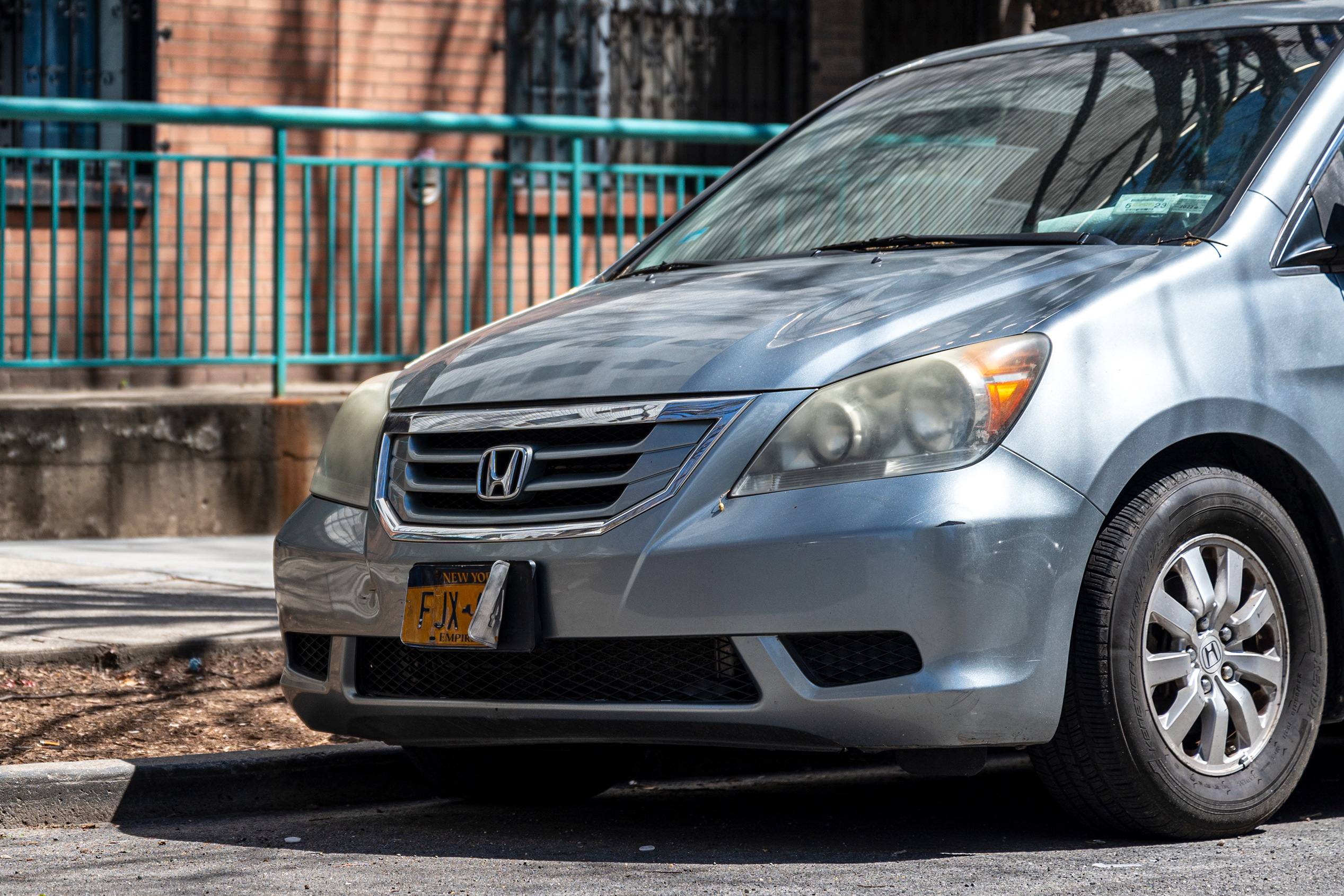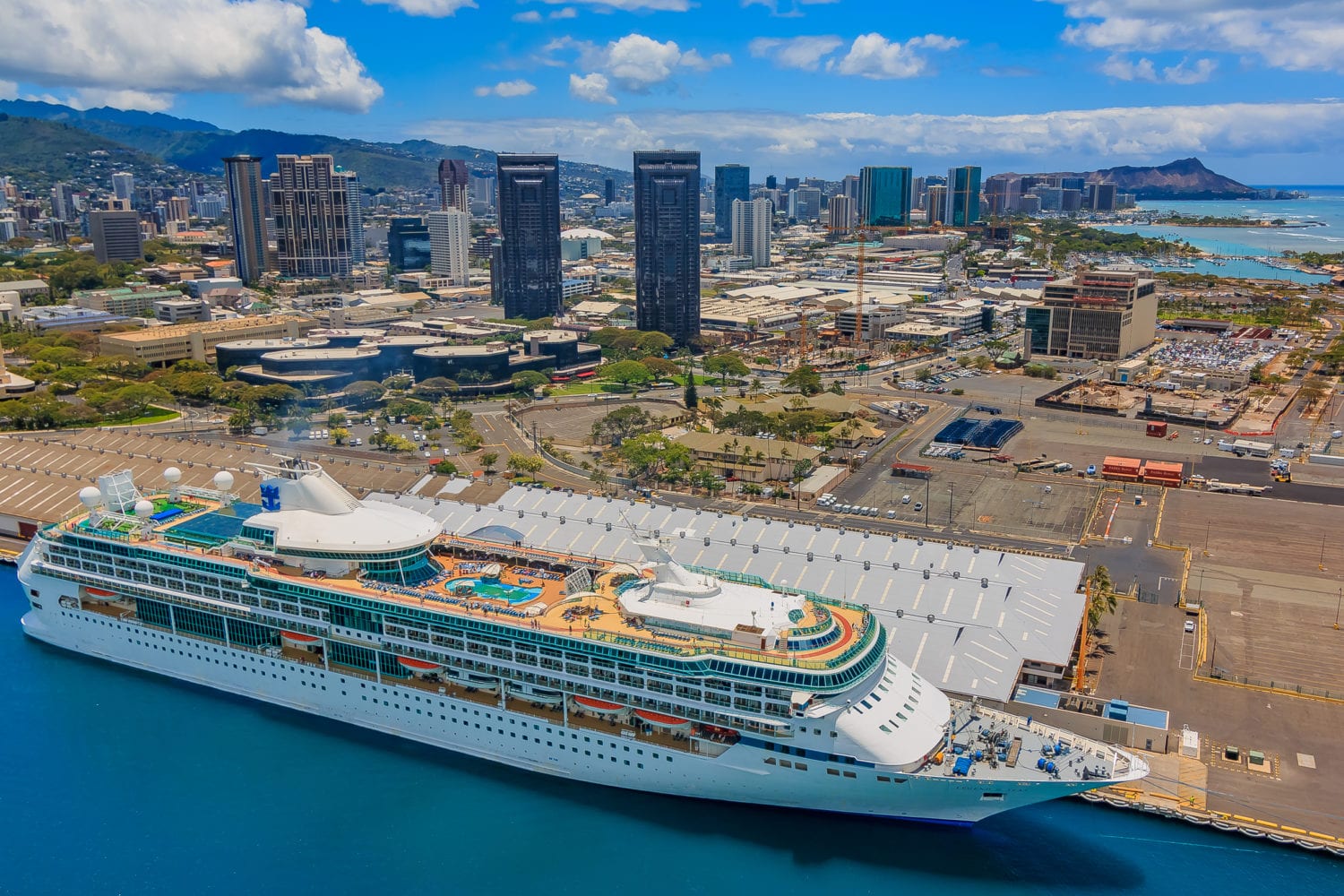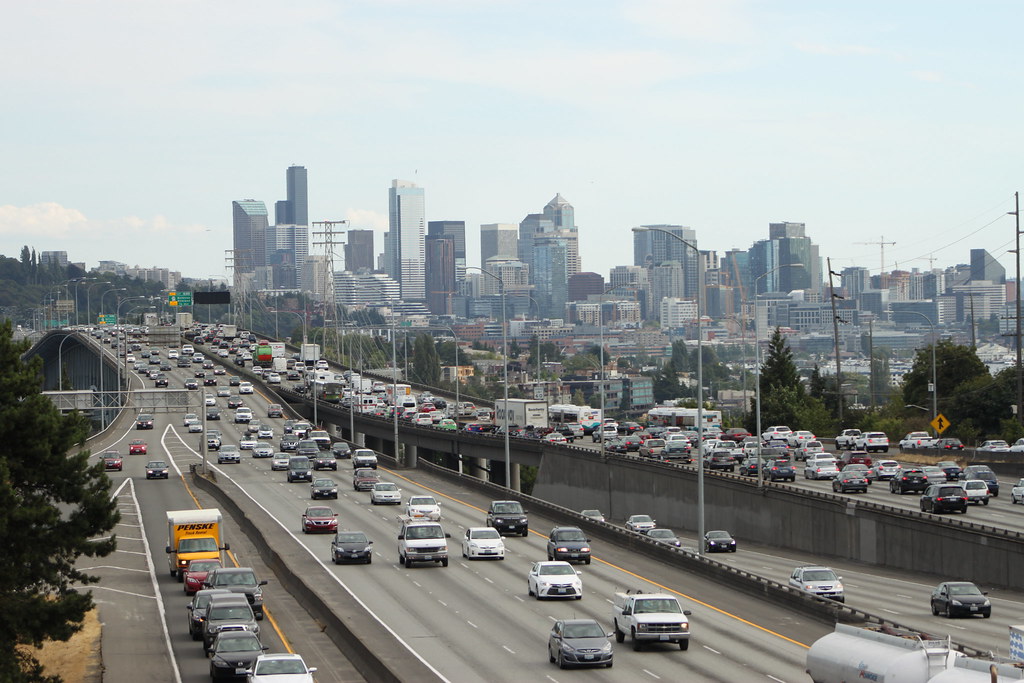More Drivers With Bogus Plates Evading Traffic Cams, Costing NYC Up to $75M

Misplaced or covered-up license plates have allowed drivers to evade red light or speeding camera tickets 1.5 million times since the pandemic hit in March 2020 — and the problem was getting worse in recent months, records obtained by THE CITY show.
Delinquent drivers do everything from bending their license plates to putting plastic covers over them to spraying various chemicals to make it impossible for the cameras to accurately read them, according to city Department of Transportation officials.
The issue has long plagued the cameras but the number of unreadable images has gone from roughly 1% or lower of all the tickets issued each month from January 2016 until March 2020 to nearly 4% in December 2021, the most recent month available via records obtained through the Freedom of Information Law.
On the line is approximately $75 million in possible fines never issued because of missing, temporary, damaged or obscured plates. Some of those possible tickets, however, are for exempt vehicles like ambulances and are never issued.
Aside from the potential lost revenue, safe street advocates and city transportation officials worry that drivers with their license plates blocked feel emboldened to break other laws on the road putting people at risk.
“Drivers using illegal license plates to evade accountability make our city more dangerous, while taking away revenue from life-saving street improvements,” said Danny Harris, executive director of the nonprofit advocacy group Transportation Alternatives. “As New York City faces rising traffic violence, city and state leaders must investigate and put an end to the proliferation of illegal plates.”
Across the country, the number of driving fatalities has soared to nearly record levels during the pandemic over the past two years. In New York City, the empty streets led to a spike in speeding and a jump in fatalities.
The problem is getting worse: traffic crashes killed 59 people over the first three months this year, according to a new report by Transportation Alternatives. That’s a 44% spike over the same period last year, and the most lethal start since 2014.
New York State law bans placing anything over a vehicle’s license plate.
The overall spike in missed plates comes despite repeated promised crackdowns by the de Blasio administration and as Mayor Eric Adams, a former NYPD captain, touts a tough on crime policy approach.
The number of traffic deaths — 266, including pedestrians and cyclists killed by cars and trucks — peaked in 2021, de Blasio’s last year in office, the most since 2013 when 293 people were killed on city streets.
Opening the Window
For years, some safe street advocates have called on the NYPD and the city’s Sheriff’s Office to do more to target evaders.
Adams last month called on the state Legislature to give the city more power to operate the cameras 24/7. Currently, the speed cameras can only be “active Monday to Friday, 6:00 AM to 10:00 PM, and the program is set to expire this year,” according to the press release.
Legislation to expand the city’s camera powers is set to be drafted shortly, said State Sen. Andrew Gounardes (D-Brooklyn), who noted state lawmakers were focused on the budget in recent weeks.
Adams held the March 25 press conference at the intersection of Ocean Avenue and Beverley Road near P.S. 245 in Flatbush, Brooklyn. That was the site where “the driver of a speeding car ran a red light at high speed, ramming a second car in its side” on August 18, 2020, according to the press release.
The 3:30 a.m. crash killed 18-year-old Isaiah Benloss in the rear seat of the second car. Speed cameras were turned off at that time as required by state law.
The alleged hit-and-run driver had temporary, untraceable New Jersey license plates that police have been unable to find. No arrest has been made.
“My job is to prevent New Yorkers from dying in our streets, and I need Albany to give me the tools to do my job,” Adams told reporters, urging state lawmakers to give him so-called “home rule control” over the speed and red-light cameras.
Roughly 30% of fatal crashes last year happened in zones that had cameras but at times when they couldn’t operate, according to DOT data.
Overall, the DOT says there’s been an approximately 72% drop in speeding at locations with speed cameras and a roughly 80% drop in red light running in areas with those cameras, according to annual reports on the programs.
As for the obscured license plates, DOT does not publicly post the number of times its cameras are unable to read license plates. THE CITY filed a Freedom of Information Law request for the data last August.
The FOIL department said it would take at least six months to compile the data and then never responded when that estimated date passed. The DOT’s press office finally sent the figures earlier this month.
All told, the city has about 1,960 fixed speed cameras in 750 school zones established by state lawmakers under the 2019 speed-camera law. Separately, the city operates 40 mobile cameras within those same areas.
The DOT plans to continue to add cameras until it reaches a total of 2,220 with the remaining 220 set to be installed this year, according to DOT spokesperson Scott Gastel.
DOT also operates 223 red-light cameras at 150 intersections, a number that has been static since 2009. Bridge and tunnel toll cameras aren’t included in this data.
The DOT has contracted with American Traffic Solutions, known as Verra Mobility since 2018, to administer and maintain speed cameras, red-light cameras and bus-lane cameras. The Arizona-based firm is being paid $367,163,436 as part of a three-year contract from January 2022 to Dec. 31, 2024, city records show.
The company does not receive a percentage of fine revenue, DOT officials pointed out.
Equity in Enforcement
Some of the transgressors are routinely parked near police precincts, according to Streetsblog, which ran a “March Madness” like competition. The transportation news site last month spotted multiple cars around stationhouses with out of state license plates and a history of parking or speeding violations.
The Twitter feed PlacardCorruption posts daily examples of illegal vehicle practices like obscured plates, bogus permits and flagrant parking on sidewalks or in front of hydrants. Top city officials charged with enforcing the rules who are tagged in the posts rarely, if ever, respond.
From January to March of this year, cops issued 1,280 plate-related moving violation tickets, down from 4,355 in the same quarter last year, according to NYPD traffic data. Overall, moving violation tickets fell 5% in the quarter.
The drop in overall NYPD in-person traffic enforcement comes as other police departments throughout the country have backed off pulling over drivers for low-level offenses. Data has shown that cops have for years disproportionately targeted Black drivers sometimes with fatal outcomes.
“Equity has to be playing into road safety,” said AAA spokesperson Robert Sinclair. “It’s unfair and leads to dangerous and unsafe situations when you target people of a particular population for being stopped perhaps when nothing is amiss.”
As for the broader obscured license plate issue, Sinclair speculated that drivers squeezed by an increase in gas prices and inflation might be seeking to save money by ducking tickets.
“It’s the overall economy,” he said. “It’s tough everywhere you look and gasoline is one of the main reasons we are seeing inflation so high. It might be an attempt to economize on the part of less than scrupulous drivers.”
Street safety problems are typically addressed by one of the three Es: education, enforcement or engineering, he added.
The city DOT has never run an education campaign specifically tied to the license issue.
In an effort to improve street safety, Transportation Alternatives and other advocates are urging the Adams administration to “fully fund and expand the NYC streets plan.”
The City Council has committed $3.1 billion in funding for the plan which calls for the construction of hundreds of miles of protected bike and bus lanes as well as one million square feet of car-free pedestrian space.
The group is also lobbying for the passage of the Crash Victim Rights and Safety Act to allow lower speed limits to be set.
Meanwhile on Saturday, Adams announced what he described as a “historic investment of more than $900 million in traffic safety” over the next five years. Much of the money will go towards more protected bike lanes, enhanced bus lanes and creating car-free plazas, the mayor said.
This article was originally posted on More Drivers With Bogus Plates Evading Traffic Cams, Costing NYC Up to $75M



